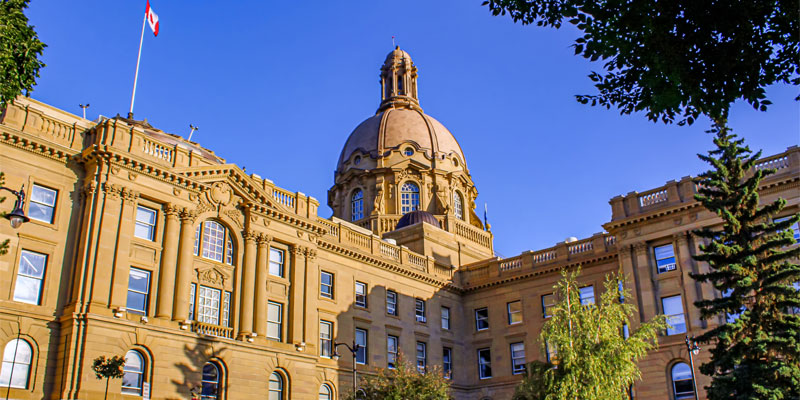Report paints bleak picture of Alberta’s fiscal future

Until recently, Alberta had the strongest provincial finances in Canada. As recently as 2015-16, Alberta was “debt free”—that is, the province’s financial assets exceeded its small total debt. By comparison, net debt in the other provinces ranged from a low of $7,047 per person in Saskatchewan to a high of $22,632 in Quebec.
Since then, of course, Alberta’s finances have deteriorated quickly. Alberta has surpassed British Columbia and Saskatchewan in net debt per person and caught up to these two provinces in debt-to-GDP ratio, a common measure of a province’s ability to pay back its debt. In short, Alberta’s advantage as a uniquely low-debt province has evaporated.
According to a recent report from the Parliamentary Budget Officer (PBO), absent policy change, Alberta will surpass other provinces that have, at various points in recent history, been among Canada’s laggards in terms of government finances.
Specifically, the report projects that on the current trajectory, in 2045 Alberta’s debt-to-GDP ratio will be substantially higher than Ontario, a province that’s seen its debt burden escalate quickly in recent years. Perhaps more strikingly, over the next 25 years the PBO suggests Alberta will easily surpass Quebec, Canada’s traditional poster boy of fiscal mismanagement.
The PBO report also projects Alberta will either surpass or at least approach several other provinces that have historically carried large debt burdens including New Brunswick, Manitoba and Prince Edward Island.
In summary, the report provides further evidence of fiscal deterioration and shows the severity of the long-term fiscal risks facing Alberta. The dark cloud does, however, have a silver lining.
First, long-term projections (including in this latest PBO report) are by their very nature imprecise estimates. The fiscal sustainability report has great value in helping us understand the current health of provincial finances and possible outcomes for the future. But a lot can happen in 25 years to change fiscal outcomes.
More importantly, the PBO report relies on an important assumption—that the policy status quo will remain in place over time. In other words, the PBO projects what will happen at the federal level and in each province in the absence of policy change.
This means that the Alberta government’s choices will have a big impact on whether the PBO’s dire projections come to pass, or if Alberta can achieve a better fiscal future. For instance, the recent “MacKinnon Report on Alberta’s Finances” showed that per-person spending in Alberta is significantly higher than in the other three large provinces—Ontario, B.C. and Quebec. If the government of Alberta reduces spending in line with those provinces, Alberta’s long-term fiscal outlook will become much brighter.
But make no mistake, the latest PBO report paints a gloomy picture. Alberta’s recent rapid run-up in debt is currently on track to continue for the foreseeable future. The report forecasts that, having already lost its unique “debt-free” status, Alberta will catch up and surpass high-debt provinces including Quebec. The Alberta government’s current approach to fiscal policy is, quite simply, unsustainable. Only significant policy changes will help the province avoid the bleak fiscal future projected in the PBO report.
Author:
Subscribe to the Fraser Institute
Get the latest news from the Fraser Institute on the latest research studies, news and events.

